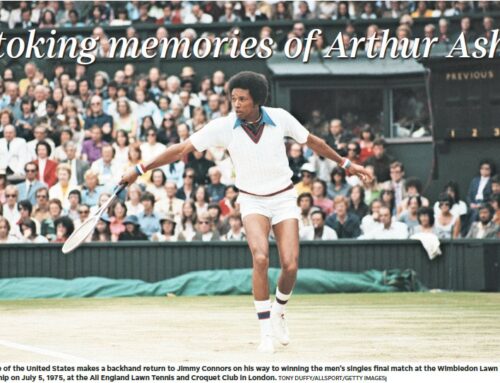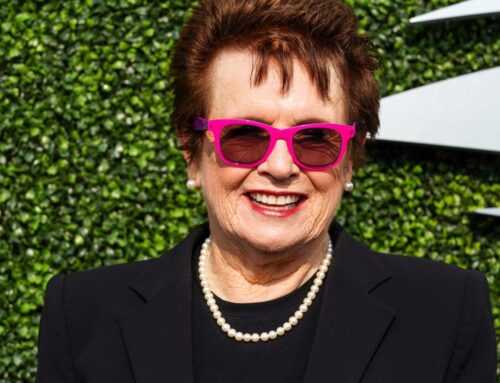Major League Baseball (MLB) got it right years ago when it conceded publicly that this nation’s era of racial segregation had deprived a generation of African Americans from – among other things – pursuing careers in baseball, on and off the field. Even today, baseball leaders continue to make amends.
The induction of R. Walter (Whirlwind) Johnson into the International Tennis Hall of Fame as the first African American contributor ought to be incentive enough for tennis leaders, particularly in the U.S. Tennis Association (USTA), to follow baseball’s noble example.
Knowing it could never truly make things right for the wrongs that had been committed against the Negro Baseball League’s players , year after year MLB did the next best thing by welcoming scores of great players and executives from the Negro Baseball League into its Hall of Fame. Just three years ago 17 players and executives from the Negro Leagues were enshrined in Cooperstown (NY), site of baseball’s Hall of Fame. “We wanted to honor and recognize them as quickly as we possibly could,” said Dale Petroskey, MLB’s Hall of Fame president.
The record shows that MLB worked diligently to make the history of African Americans in baseball an integral part of its history. The USTA leadership should do the same. Some suggestions.
* Pay tribute – in a meaningful way – to the American Tennis Association (ATA) for providing African Americans the opportunity to learn and play competitive tennis when the sport demanded “whites only” in every sense of the phrase. The ATA, founded in 1916, is the nation’s oldest African American sports organization. Some USTA officials contend that it’s no longer needed, but it is – just as the NAACP is still needed. However, the USTA might one day make the ATA obsolete simply by being as proud of and grateful for the courage shown by the early African American tennis players/officials as most people of color are.
* Recognize and accept Whirlwind Johnson as a sports hero to be admired and honored by all tennis lovers, not just African Americans. Place his bio/story in the various USTA publications, including the annual yearbook. Share stories of other outstanding ATA players/officials (Ora Washington, Dr. Reginald Weir, Dr. Hubert Eaton, Sr., George Stewart, Robert Ryland, etc.) with its membership through USTA periodicals.
* Include African Americans in leadership/decision-making positions within the organization. Shortly after Arthur Ashe died (in 1993), one high-ranking African American USTA official predicted tough-times for blacks in tennis – on the court and off- because Ashe no longer would be there to provide input and guidance. That official and two other African American executives are no longer employed by the USTA.
My own sense of the world tennis community is that it continues to be a somewhat unfriendly environment to African Americans. Do I feel that way because there are so few African Americans competing at the highest level of the game? Or is it because I’ve experienced first-hand and on too many occasions what it means to ‘stand out’ in a negative way at tennis events. In my early years as USA Today’s tennis correspondent, I was twice escorted out of an event at Amelia Island, Fl., though I wore valid press credentials. Wearing valid press credentials didn’t help me at two U.S. Open events, as well.
At a luncheon 10 years ago, a white USTA executive encouraged me to share with the USTA president my “wish list,” steps I believed might help make the organization more appealing to minorities. Here are excerpts from a letter I sent to two different USTA presidents:
* “As president, speak out against racism, make it clear that racial bias among USTA volunteers, employees or board members will not be tolerated. History tells us that strong leadership -at every level- often can sway the masses, especially when the message advocates a sense of morality, fairness and common sense. “
* “Don’t hesitate to seek and use minority expertise and guidance at every level of the USTA. It’s always been puzzling to me why the USTA never consulted John Wilkerson or Willis Thomas when USTA plans involved the development of junior programs in our inner cities. These two coaches developed Zina Garrison and Lori McNeil, two former top 10 pros. Why not seek their assistance?”
* “Don’t avoid, ignore or try to silence USTA members who are brave enough to focus on the problems. For the most part, assertiveness in this society is an admirable trait. Too often whites recoil or become defensive when acts of bigotry are identified too close to home. Racial bias in America is a fact of life. It won’t be eradicated or reduced if we continue to pretend that it’s someone else’s problem. With so many other responsibilities and problems to address, it might be tempting for you to slide the matter to the back burner, hoping that it might go away. It won’t. I pray that you will choose a positive approach, and not just search for a political spin, when tackling what has been and will continue to be the most divisive issue of our time.”
Judging by the reaction to President Obama’s comments Thursday regarding the arrest of Harvard scholar Henry Louis Gates Jr., the issue of race in these United States continues to be sharply divisive.





Leave A Comment